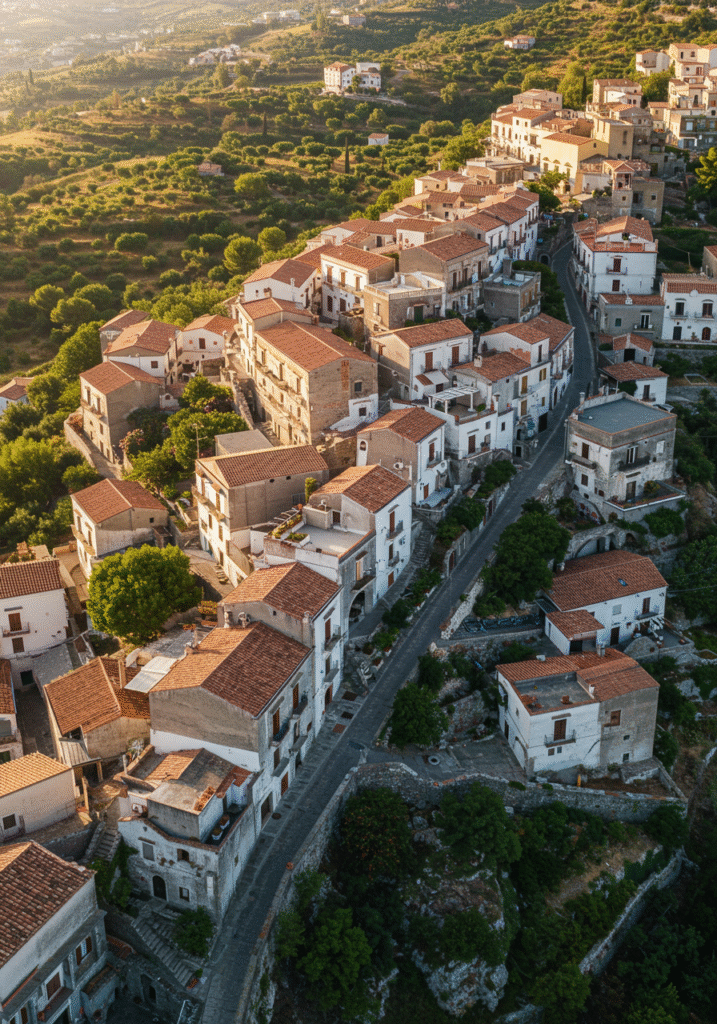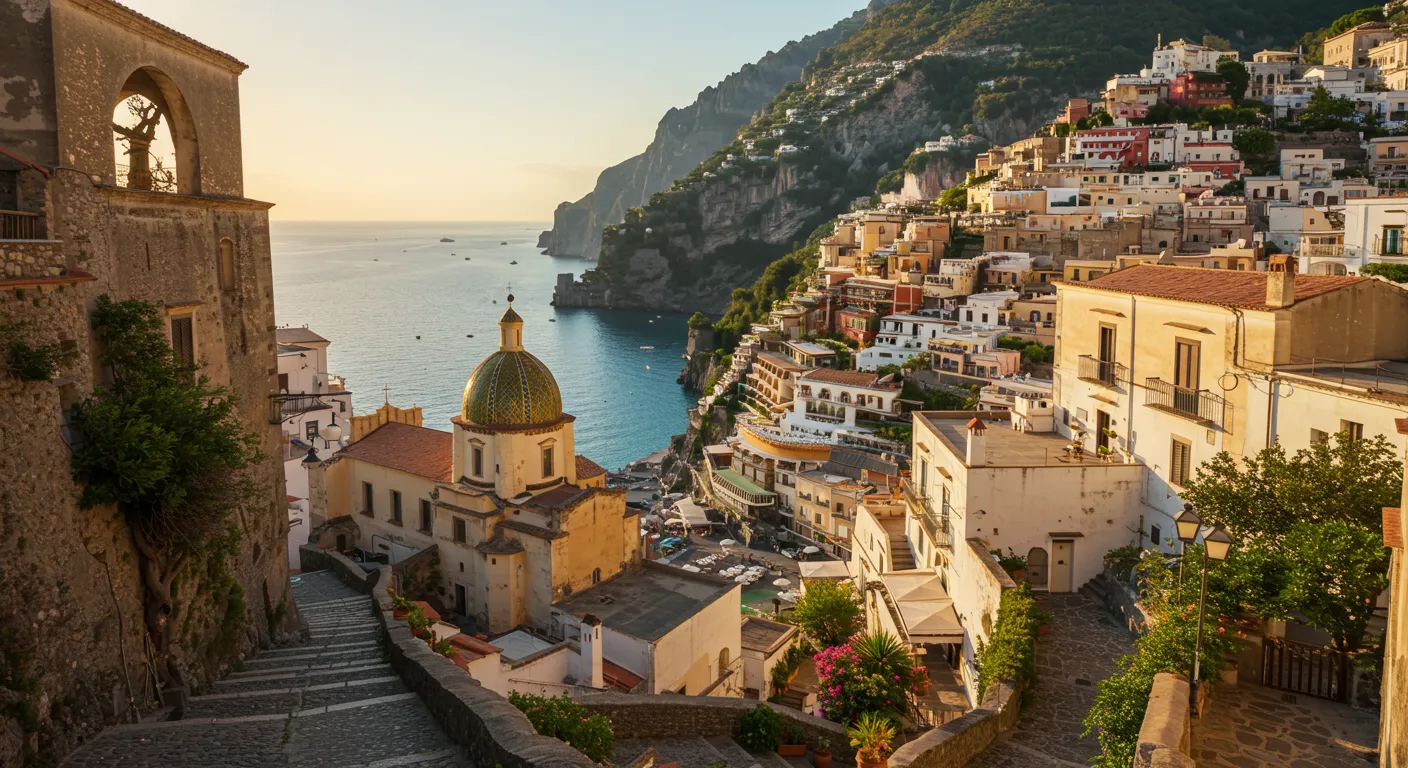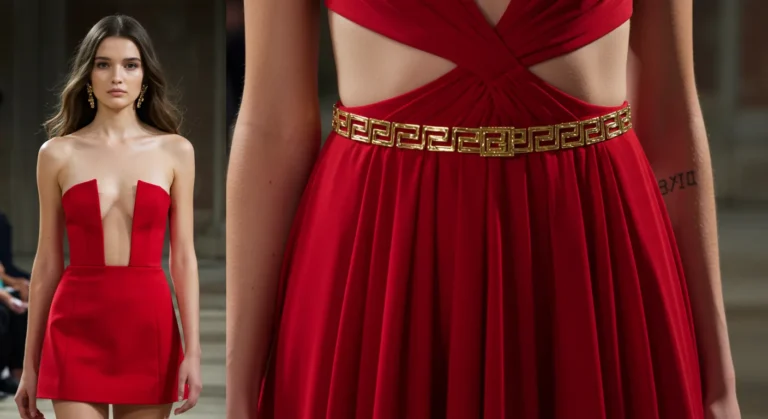best Solitano From Emily in ParisThe real beauty
introduction
In the vibrant tapestry of Netflix’s Emily in Paris, Season 4 introduces viewers to a picturesque Italian village named Solitano. This enchanting locale, with its cobblestone streets, communal gatherings, and artisanal charm, becomes a backdrop for Emily’s adventures and a symbol of timeless Italian elegance. But as viewers are swept away by Solitano’s allure, a question arises: Is a real place, or a creation of fiction?

The Fictional Charm of Solitano
It as depicted in Emily in Paris, is a quaint Italian village where tradition meets modernity. It’s portrayed as the hometown of Marcello, Emily’s charismatic love interest, and the base of his family’s luxurious cashmere business. The village exudes a sense of community, with scenes showcasing shared meals, local celebrations, and a deep-rooted connection among its residents.
However, despite its vivid portrayal,it is a fictional creation crafted specifically for the series. The show’s creators designed it to encapsulate the essence of idyllic Italian villages, blending elements from various real-life locations to bring to life on screen.
Real-Life Inspirations
While doesn’t exist on the map, its inspiration stems from real Italian locales. Notably, the village draws significant influence from Solomeo, a small town in Umbria, Italy. Solomeo is renowned as the home of fashion designer Brunello Cucinelli and his luxury cashmere brand. The town embodies values of craftsmanship, community, and sustainable living—principles mirrored in ‘ depiction.
Moreover, the actual filming of ‘ scenes took place in Ostia Antica, an ancient Roman town near Rome. With its well-preserved ruins, historic architecture, and timeless ambiance, Ostia Antica provided the perfect setting to represent the fictional village. The choice of this location adds authenticity to portrayal, grounding the fictional narrative in real-world beauty.
The Allure of Fictional Realism
Its creation highlights a broader trend in storytelling: the blending of fiction with real-world elements to craft immersive narratives. By drawing from actual locations and cultural touchstones, Emily in Paris offers viewers a sense of authenticity, even within its fictional constructs. This approach not only enriches the viewing experience but also sparks interest in the real places that inspire such stories.
For fans and travelers alike, serves as a gateway to exploring the charm of Italian villages. While one can’t visit per se, destinations like Solomeo and Ostia Antica offer tangible experiences reminiscent of the show’s enchanting setting.
Embracing the Solitano Spirit
The fascination with underscores a universal yearning for places that embody community, tradition, and beauty. Whether it’s the allure of artisanal crafts, the warmth of communal gatherings, or the serenity of historic streets, captures the imagination.
For those inspired by Solitano’s depiction, Italy offers a plethora of villages that echo its charm. Exploring these locales allows travelers to immerse themselves in the culture and ambiance that Emily in Paris so vividly portrays.

The Real-Life Inspirations Behind Solitano
Though village is a fictional village in Emily in Paris, it draws heavily from real Italian places that embody beauty, culture, and artisanal excellence. Chief among these inspirations are Solomeo, the spiritual heart of Italy’s luxury cashmere industry, and Ostia Antica, an ancient Roman town with breathtaking charm. Understanding the real-life places behind Solitano not only enriches the viewing experience but also inspires travel to some of Italy’s most soulful destinations.
Solomeo
Nestled in the Umbrian hills of central Italy, Solomeo is more than a village — it’s a philosophy. Known globally as the headquarters of Brunello Cucinelli, the “philosopher king of cashmere,” Solomeo represents a dream: one where art, humanity, and high-end fashion coexist in harmony. Cucinelli restored this medieval hamlet with his fortune, turning it into a sanctuary for craftsmanship, ethics, and slow living.
The fictional cashmere business shown in village directly mirrors the real-life craftsmanship culture of Solomeo. In both stories, tradition is respected, local artisans are revered, and fashion is not just about trends but purpose. In Solomeo, you don’t just wear a garment; you wear a piece of history, made by hands that care.
Ostia Antica
While Solomeo inspired the values behind the actual filming location was in Ostia Antica, just outside Rome. Once a bustling Roman harbor city, Ostia Antica now stands as one of Italy’s most stunning archaeological parks. Its ruins — temples, baths, markets, and homes — offer a window into ancient life, untouched by modern tourism.
The show’s creators chose Ostia Antica to visually portray due to its authentic architecture, narrow alleys, and sun-drenched courtyards. It evokes a timeless Italian spirit, making viewers feel like they’ve stepped into a postcard — or even better, a place where past and present dance together.
Blending Past and Present
Its resonates not just because of its beauty but because it symbolizes a world we long for: community, authenticity, and beauty that doesn’t shout but whispers. This blending of Solomeo’s values and Ostia Antica’s visuals gives a sense of realism that makes us want to find it on a map.
For Paulmarina.com’s readers, this is a reminder that even fiction can lead to meaningful travel. Visiting Solomeo or Ostia Antica allows you to touch the spirit of Solitano — to walk the same kind of paths, hear the same echoes of tradition, and support the same kind of ethical, small-scale luxury.
Solitano Style
Beyond its charming streets and communal dinners, one of the most striking elements of Solitano is its fashion identity. In Emily in Paris, Solitano isn’t just a setting — it becomes a fashion statement. The way characters dress in the village contrasts starkly with the bold, cosmopolitan outfits of Paris. Here, natural fabrics, neutral palettes, and handcrafted pieces take center stage — and that’s no accident.
Minimalism Meets Craft
In Solitano, we see a return to simplicity: cashmere shawls, linen dresses, leather sandals, and woven bags. The show uses these wardrobe choices to visually communicate the slower pace and artisanal soul of Italian village life. Compared to Paris, where style is flashy and experimental, Solitano is rooted in timeless fashion — pieces that last, both in trend and in quality.
This style approach mirrors the real-life luxury philosophy of Brunello Cucinelli, whose brand is synonymous with understated opulence. By choosing clothing that whispers rather than shouts, the show invites viewers to reconsider what elegance means in the modern age. It’s not about logos or layers — it’s about fabric, fit, and how something makes you feel.
The Return of “Quiet Luxury”
Solitano’s influence also connects to the rising global trend of “quiet luxury” — a fashion movement that celebrates minimalism, heritage craftsmanship, and quality over quantity. In a world saturated by fast fashion and online fads, Solitano’s style reflects a shift toward meaningful consumption. And audiences are paying attention. Google searches for “quiet luxury” and “Italian minimalist fashion” have surged since the episode aired.
Brands like Loro Piana, Max Mara, and Cucinelli are prime examples of this ethos. They favor tactile beauty and elegance rooted in tradition — values visually echoed in Solitano’s aesthetic.
Fashion Takeaways from Solitano
If you’re inspired by Solitano’s effortless style, here are a few tips to incorporate it into your wardrobe:
- Invest in natural fibers like cashmere, silk, and cotton
- Stick to earthy, neutral tones — taupe, ivory, terracotta, and olive
- Embrace tailoring over trends — well-fitting pants and classic knits always impress
- Support slow fashion by shopping from ethical brands or vintage stores
- Accessorize subtly — a leather belt, woven bag, or silk scarf says more than a logo ever could
Whether you’re traveling to Italy or walking your city streets, Solitano style is a mindset — calm, confident, and rooted in beauty that doesn’t expire.
Can You Visit Solitano?
If Solitano stole your heart, you’re not alone. Fans of Emily in Paris have been searching online asking, “Is Solitano real?”, “Where is Solitano filmed?”, and “Can I travel there?” The answer is both yes and no — Solitano itself is fictional, but the emotions it stirs and the beauty it shows are very, very real. In fact, Italy is full of villages that look, feel, and live just like Solitano.
Travel Like Emily
If you’re ready to experience Solitano in spirit, here are a few stunning destinations that bring that world to life:
Solomeo
As the philosophical twin of Solitano, Solomeo is a tiny hilltop town where ethics, beauty, and fashion intersect. Tour the Cucinelli Theatre, browse exquisite boutiques, and soak in panoramic views of the Italian countryside.
Ostia Antica
Step into ancient Roman history just 30 minutes from Rome. With fewer tourists than Pompeii, Ostia Antica lets you roam free among ruins, amphitheaters, and alleyways — all while channeling Solitano’s energy.
Civita di Bagnoregio
Dubbed “The Dying City,” Civita sits atop a plateau and is only accessible by a pedestrian bridge. It’s romantic, silent, and spellbinding — ideal for lovers of solitude and beauty.
Ravello
Although more luxurious, Ravello offers cliffside elegance with artistic flair. Classical music festivals, ancient villas, and citrus-scented air make it a living dream.
What to Do When You’re There
- Dine in local trattorias, where handmade pasta and local wines redefine your palate
- Shop handmade — from olive oils to ceramics to custom cashmere
- Get lost on purpose, and talk to locals — that’s where the magic lives
- Attend village festivals, which often celebrate saints, seasons, and regional pride
Why Solitano Is a Feeling
More than just a backdrop, Solitano symbolizes a way of life. It’s about connection — to people, to craft, to beauty. And that’s something you can feel whether you’re in Umbria, Tuscany, or even a quiet alley in Florence. You don’t need to find Solitano — you just need to feel it, live it, and carry a piece of it with you.
Frequently Asked Questions
Is Solitano a real place in Italy?
No, Solitano is a fictional village created for Emily in Paris Season 4. However, it is inspired by real Italian towns like Solomeo and filmed in Ostia Antica.
Where was Solitano filmed?
Solitano’s scenes were primarily filmed in Ostia Antica, near Rome. Ostia Antica’s well-preserved ruins and historic streets provide the authentic Italian atmosphere seen in the show.
What real town inspired Solitano’s cashmere business?
The luxurious family business in Solitano is inspired by Brunello Cucinelli’s real cashmere empire based in the town of Solomeo in Umbria, Italy.
Can I visit Solitano?
While you cannot visit Solitano itself, you can explore the real-life locations that inspired it — such as Solomeo, Ostia Antica, and other charming Italian villages like Civita di Bagnoregio and Ravello.
What fashion style is associated with Solitano?
Solitano’s fashion style highlights quiet luxury, featuring natural fabrics like cashmere and linen, neutral earthy colors, and timeless, understated elegance reflecting Italian craftsmanship.
How can I bring Solitano’s style into my wardrobe?
Focus on quality basics made from natural fibers, choose earthy and neutral colors, invest in timeless tailoring, and support ethical slow fashion brands that value craftsmanship.
Why does Solitano resonate with viewers?
Solitano resonates because it represents community, heritage, beauty, and mindful living — values many seek in a fast-paced modern world. It’s both a fantasy and a reflection of a life well lived.
Conclusion
Solitano isn’t just a fictional village on a TV show; it’s a symbol of timeless Italian culture, craftsmanship, and the joy of slowing down to savor life’s simple pleasures. Through its roots in real places like Solomeo and Ostia Antica, its understated yet luxurious fashion style, and its spirit of community and tradition, Solitano captures the imagination of millions worldwide.
For Paulmarina.com’s readers, Solitano offers more than escapism. It’s a blueprint for how we might live more mindfully and beautifully — embracing heritage, supporting artisans, and choosing quality over quantity. Whether you dream of visiting Italy’s hidden gems or want to bring the Solitano aesthetic into your wardrobe, this fictional village leaves a lasting imprint.
Solitano’s appeal lies in its balance of old and new, elegance and simplicity, fantasy and reality. It invites us to pause, look deeper, and appreciate the artistry woven into everyday life. And in a world moving too fast, that’s a message worth celebrating.







